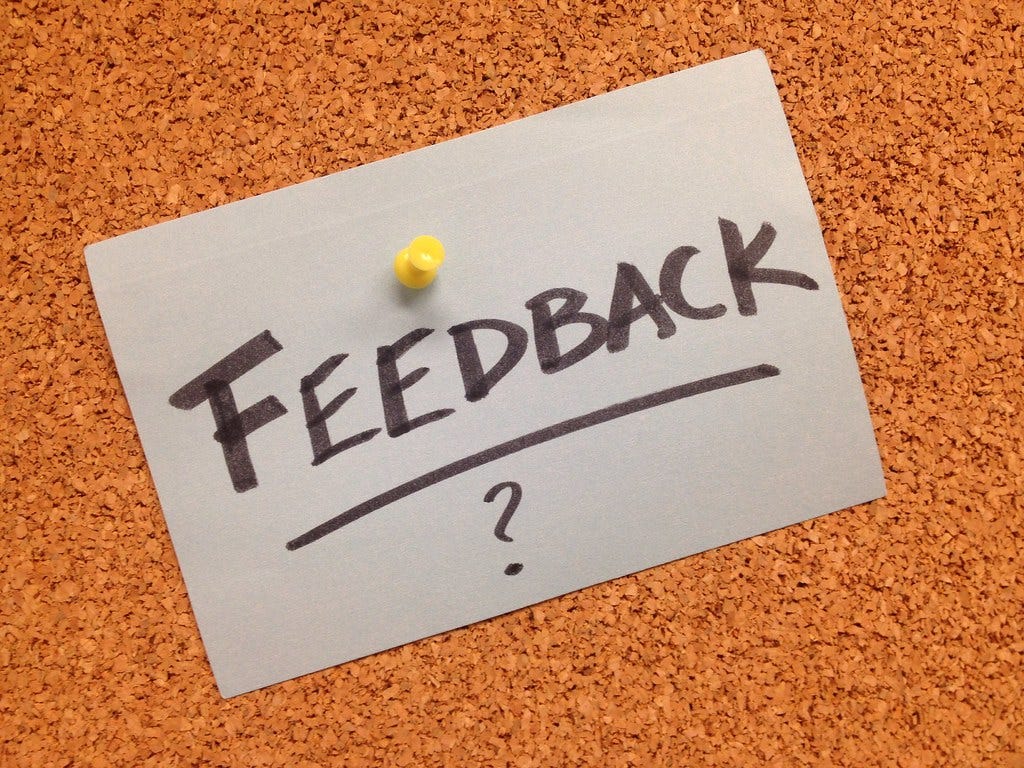Tip: Feedback in Performance-Based Courses
R2C2 Feedback Model helps instructors navigate providing immediate, face-to-face feedback on student performance
How we provide feedback to students on their work can make all the difference in how students perceive their own growth and abilities. Wise feedback communicates confidence that students can meet high expectations, and thinking about transfer-oriented feedback provides scaffolding for students to apply what they have learned to future assignments. What if feedback needs to be provided on aspects of student performance in a more immediate way?
I regularly teach weekend classes for students earning a certificate in Teaching English as a Second Language. A large part of these workshops is dedicated to student teaching demonstrations and immediate feedback/discussion of their performance. Written feedback is limited to comments on a rubric, and before students see any written comments there is a whole-class debrief at the conclusion of each demonstration. Providing feedback on a performance-based task is different in several keys ways than the feedback I provide on written assignments. As I was reflecting on these differences, I came across a model from the medical education field that accurately captures the focus on immediate and actionable feedback.
R2C2
This is a 4-step model - with two “R”s and two “C”s - that provides structure to in-person feedback sessions.
Relationship building
exploring Reactions to the feedback
exploring an understanding of feedback Content
coaching for Change in performance
What this might look like in a non-medical education context is outlined below, based on my experiences giving workshops for future teachers.
STEP 1: (Re) Establish Relationships
Last time we talked, we agreed that you would do/work on _______. How have you been doing?
The focus of today’s workshop/lab/practice is _______. How do you feel about it?
What skills are you working on today? What would you like feedback on?
I typically spend the first part of a day-long workshop establishing a warm but professional relationship with students, so that they see me as knowledgeable (and therefore my opinion is worth listening to) and caring (so that they know I want to see them do well and to improve). At the start of each post-demonstration debrief session I begin with addressing what went well in the demonstration. Focusing first on what worked both increases the learner’s self-confidence and shows them that I noticed where they were successful.
STEP 2: Learner Reactions & Reflections
How was ________? What do you think you did well?
When you did __________, I noticed _________. Can you tell me about why you did ________?
I noticed that you did ________. Is there another way you could have approached this?
What was challenging or frustrating about this task? How do you feel now?
After soliciting positive feedback from classmates, it’s natural to move to a discussion of less effective decisions. I use questions like the ones above, directed to both the individual and the whole class, to apply knowledge of teaching strategies to the specific context of the just-completed lesson demonstration.
STEP 3: Check Understanding of Feedback Content
Do you have a clear understanding of what we talked about regarding your performance on ______?
Does the feedback I provided/we discussed as a group make sense?
Now that we have talked about your performance on ________ aspect, what is your goal for next time you ________?
Okay, so I hear you say that you want to work on_______ for next time. Is that correct?
Before finishing the individual debrief, I check to make sure that the comments I - and classmates - provided make sense to the student, and ask whether the student has any initial thoughts about what to do differently next time.
STEP 4: Change-Oriented Action Plan
Now that you’ve practiced _____ and received feedback from me/peers, what might you work on improving?
To make those changes, what resources do you need? What can I provide to support you?
What do you think is a realistic timeline or plan for improving _______ or implementing the changes you’ve suggested?
At the end of the day, students have seen multiple teaching demonstrations by their peers and participated in a discussion of each demonstration immediately after each. We then spend some time in a whole-class discussion focused on the next steps: What does each student need to think about as they prepare for the next teaching demonstration they will do? This discussion is always a rich one, because of the layers of feedback on their own performance and the performance of others that students have engaged in over the course of the workshop.
Overall, the R2C2 model provides a helpful structure for navigating providing immediate, face-to-face feedback on student performance. It’s a skill like any other teaching skill, that needs to be practiced so that instructors feel comfortable in demonstrating their expertise and scaffolding the students’ learning.

On a personal note, I’ll be presenting/leading a discussion of hybrid teaching this Friday, February 19, 12pm ET. Here’s the session description:
Hybrid courses have their own benefits and challenges that are different from on-campus and online courses. How do you handle the onsite instruction remotely and organically integrate it into online learning to accommodate the remote teaching situation? How do you adapt learning activities to a remote and online format? How do you assess student learning while teaching the entire course remotely? The webinar will focus on strategies promoting student-centered learning to help faculty reflect on the choices we make and how they impact our students. After the webinar, you’ll take away ideas about a practical hybrid learning design approach, adapting activities and assignments to combined synchronous/asynchronous delivery, offering low-stakes assignments, and multiple ways to assess student learning.
I would love to have you join the conversation - you can register here.
For more reading:
This site provides a helpful overview: R2C2 Overview
Evidence-Informed Facilitated Feedback: The R2C2 Feedback Model


